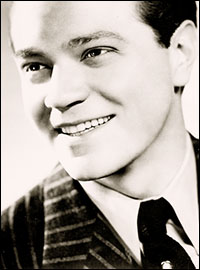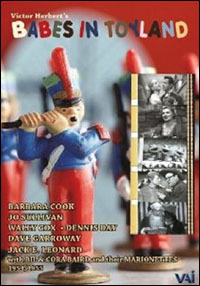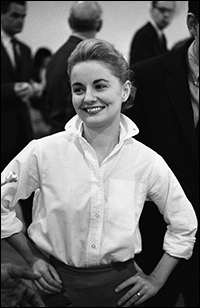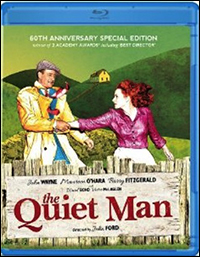
*
From the archives of early television producer Max Liebman come two different Broadway-related specials from the mid-1950s, brought to us by Video Artists International (VAI). Neither are altogether successful, or even halfway successful. Both, though, offer things to watch.
Marco Polo, from 1956, is an example of a doomed attempt to reproduce an earlier success. In 1953, Alfred Drake had starred on Broadway in Kismet, subtitled "A Musical Arabian Night." This came with songs adapted from themes by Alexander Borodin (1833-87), one a group of Russian Nationalist composers — sometimes referred to as "The Mighty Handful" or "The Five" — who worked in St. Petersburg in the 1860s, attempting to write symphonic music that sounded more Russian than European. Kismet was a general crowd-pleaser although classicists could, and did, carp.
Three years later, Liebman and/or Drake came up with "Marco Polo," loosely based on the tale of the 13th-century Venetian merchant. This time they took tunes from another of The Five, Nikolai Rimsky-Korsakov (1844-1908). The Kismet flavor was extended to the setting (which included the Near East and Far East), the musical setting, and the presence of both Drake and his Kismet costar, Doretta Morrow.
All of which might have provided a colorful hour-and-a-half. But there was a big problem. Rimsky-Korsakov was a fine composer, with an arguably stronger output than Borodin. (R-K's "Scheherazade" and "Capriccio Espagnol" remain justly popular.) But Kismet had Robert Wright and George Forrest, contemporary songwriters who specialized in taking themes from the classics and adapting them into show tunes. "Marco Polo" had Liebman's in-house arrangers Clay Warnick and Mel Pahl, who did not have the Wright & Forrest touch. (Warnick, for what it's worth, was an accomplished Broadway vocal arranger with over 20 musicals to his credit, in many cases working with Don Walker, Rodgers & Hart's By Jupiter, Coleman & Leigh's Little Me, and Donnybrook! among them.) Visit PlaybillStore.com to check out theatre-related DVDs for sale.
 |
||
| Alfred Drake |
The major attraction here is Drake; he gives a commanding performance in spite of the material. What we get is a combination of his two greatest starring roles, Petruchio (from Kiss Me, Kate) and Hajj (from Kismet). And a big goatee, too. Alfred is just about 40, here, in full control of his singing voice and his acting. His Marco gives a full indication of just how powerful a stage performer he could be.
Ms. Morrow, on the other hand, is not quite what you might imagine; for one thing, she looks bigger than one would expect from photos of her in Where's Charley?, The King and I and Kismet. Nor does she have the charm one expects she must have had onstage; when she and Alfred are dueting, you look at Alfred. Maybe she just had an off night, which I suppose occasionally happened in the days of live TV. She can sing, though; this is the voice that launched "I Have Dreamed" and "Stranger in Paradise," among others.
Elsewhere we have another Kismet alumni, featured dancer Beatrice Kraft. She is very good here in two exotic numbers; she has the Jack Cole moves down pat, enough to have enabled her to choreograph her numbers — featuring members of her own dance company — in proper Cole style. The non-Kraft choreography by James Starbuck, though, is beyond weak. The first act closer, "The Tartar Dance," in fact, is laughably bad. Starbuck has the fierce members of Genghis Khan's court doing American Injun stuff mixed with calisthenics and something that looks like it will in ten years time turn into The Monkey or The Frug.
Visit PlaybillStore.com to check out theatre-related DVDs for sale.
 |
||
| Cover art |
That said, I've never gotten much out of this musical. It tells of two orphans who try to escape their mean guardian by running to Toyland, that "little girl and boy land." (Thanks for that, Mr. MacDonough.) They've got a song in the first act called "Go to Sleep, Slumber Deep," and that expresses my sentiments. That said, "I Can't Do the Sum" is perky, "Toyland" makes an effective lullaby, and the rousing instrumental "March of the Toys" is one of my favorite pieces by Herbert.
Liebman set his staff on a TV adaptation for a holiday airing in 1954, with a script by William Friedberg and Neil Simon (who later paired for "Marco Polo") along with Will Glickman, Fred Saidy and Bill Jacobson. Both programs had Charles Sanford as conductor and Irv Kostal as orchestrator.
This "Toyland" is most imaginative in its work by Bil & Cora Baird and their Marionettes. Otherwise, it's mild. What makes the venture most interesting to current-day viewers is leading lady Jo Sullivan, who had created the role of Polly Peachum in Marc Blitzstein's adaptation of The Threepenny Opera. (Threepenny opened in March for a 12-week run, after which it lost its theatre. Sullivan then moved to City Center to do Julie in Carousel; her exceptionally good Carrie was Barbara Cook. Threepenny reopened in 1955 and went on for years, although Sullivan left after the reopening for Frank Loesser's The Most Happy Fella. "Toyland" was filmed between Carousel and the continuation of Threepenny.)
"Toyland" was apparently so popular that the network decided to produce an encore on Christmas eve, 1955; reruns at the time were technologically unfeasible. With Sullivan unavailable or unwilling, they switched heroines to Ms. Cook. She was just then nearing the end of her run in Plain and Fancy; Candide was about 10 months away. One wonders whether Sullivan was up for Cunegonde, the "glitter and be gay" girl in Candide; Blitzstein, who had already hired her on four occasions, would clearly have discussed her with Bernstein. Or whether Cook was up for The Most Happy Fella, although Loesser's description in his preliminary draft — that Rosabella should be "as pretty a girl as Equity has to offer" — better fits Sullivan. For that matter, was Sullivan (the soon-to-be Mrs. Loesser) considered for Marian, that librarian in The Music Man? Which Frank coproduced, and on which he most surely wielded casting approval. But what's — to borrow a song title — the use of wondrin'?
 |
||
| Jo Sullivan |
||
| Sony Music Archives |
Most of the cast is the same on both telecasts. Dave Garroway — the initial host of NBC's "Today Show" — serves as the narrator (Santa Claus); comedian Jack E. Leonard plays the villainous Barnaby; Wally Cox is the apprentice toymaker Grumio; and Dennis Day is woefully wooden as tenor Tommy Tucker.
Speaking of Carousel, which is on our mind just now, "Toyland" gives us Bambi Linn as the featured dancer (along with her husband Rod Alexander, who also choreographed the program). Linn did not simply play the daughter Louise in Carousel, both originally and with Jo & Barbara at City Center; she seems to have played an integral part in the musical's creation. Hammerstein's early outline for the musical retains key elements of Liliom, the play on which it is based; the Budapest locale and character names remain, along with some questionable items like a comedy quartet for Julie and the characters who would become Carrie, Nettie and Mrs. Mullins (which Hammerstein describes as a Desert Song-like number). And then there's a duet called "Put Your Faith in Sardines and Me." But Linn — who was the youngest of the de Mille dancers in Oklahoma! — was clearly on Oscar's mind. When he comes to describe the climactic ballet in the outline, he exclaims that "the child is a young woman. Bambi!"
Visit PlaybillStore.com to check out theatre-related DVDs for sale.
 |
||
| Cover art |
Visit PlaybillStore.com to check out theatre-related DVDs for sale.
(Steven Suskin is author of "Show Tunes," "The Sound of Broadway Music: A Book of Orchestrators and Orchestrations," "Second Act Trouble," the "Broadway Yearbook" series and the "Opening Night on Broadway" books. He also pens Playbill.com's Book Shelf and On the Record columns. He can be reached at [email protected].)









